Karnataka is undoubtedly one of the richest and cultural capitals of India. Already famous for its iconic towering temples that are ancient engineering marvels, Karnataka also represents the perfect mosaic of incredible heritage through its various art forms. Karnataka has given birth to some of the finest dance and music forms in India. The combination of artistry and expressions depicted in the folk dance and music of Karnataka among other forms of performance acts makes it an extremely delightful experience to witness. The dance and music in Karnataka is a major part of the local people’s lifestyle. Through this they express their enthusiasm, excitement, love, devotion and loyalty.
Here are the various folk dance and music of Karnataka:
Folk Dances of Karnataka
1. Bharatanatyam
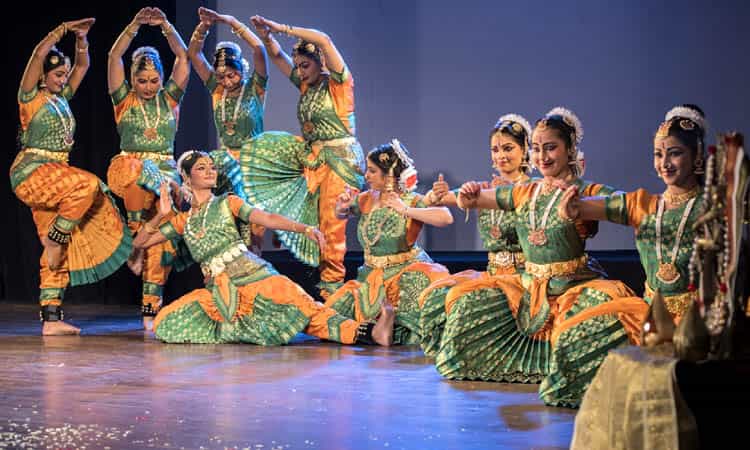
Originating in Karnataka, Bharatnatyam is one of the most famous dance forms in India. This classical dance enjoys a huge popularity across the globe. The origin of Bharatnatyam Dance form can be traced back to the 5th Veda or the Natya Shastra that was written by the Hindu Sage Bharata Muni. It is clear that the name of this dance form is derived from the name of the sage. The dance embodies the three primary essences of humans called Bhav or emotion, music and song or raga and rhythm or Tala. Before gaining popularity as one of the most elegant dance forms, Bharatnatyam was performed by the temple dancers or the devadasis.
2. Kuchipudi
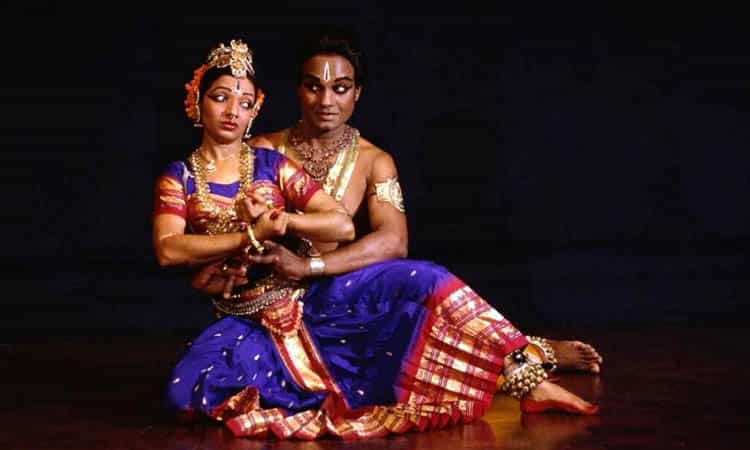
Kuchipudi can be best described essentially as a dance drama that draws its name from its place of origin in Kuchelapuram, in the south eastern part of Andhra Pradesh. Other than Andhra Pradesh, Kuchipudi in Karnataka enjoys a special liking which is then performed by both men as well as women in the region. Kuchipudi was once a concealed art form that was kept as a prized possession among the Brahmins and was only performed behind closed doors. However that was in the past, currently Kuchipudi is taught and learned by classical dance enthusiasts throughout the country.
3. Dollu Kunitha
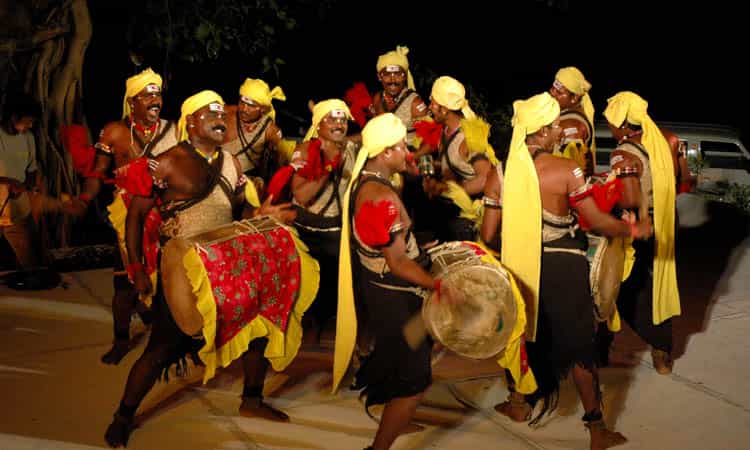
Dollu Kunitha is one of the major traditional folk dance forms of Karnataka. The dance is primarily performed by the men and women folk of the Kuruba community that reside in the northern Karnataka region. The dance performance usually marks the commemoration of an auspicious event. The Chitradurga and Shimoga districts are mainly noted for their excellent performance in this folk dance form. Other than entertainment the purpose of this dance is intended towards spiritual wellbeing of the audience as well as the performers. This makes the dance drenched with religious overtones that makes the whole performance a mesmerising act.
4. Puja Kunitha
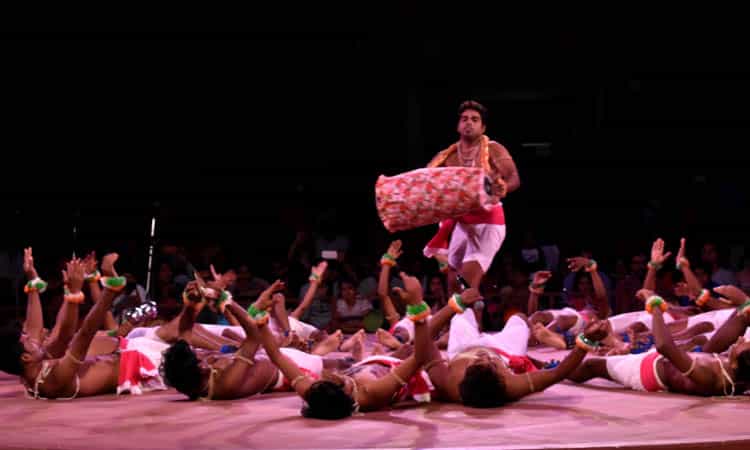
Puja Kunitha is another one of the most popular ritualistic folk dance forms of Karnataka. Performed and Practised largely around Bangalore and Mandya districts, this dance is a visual treat. Accompanying the dance, what makes the whole experience even better is the detailed oral explanation and narration. Puja Kunitha in Karnataka started off ritually as a worship for the Shaktiism cult. This ritualistic folk dance was developed with the intention of offering prayer and worship to the various incarnations of goddess Shakti. Performed mainly during puja and religious ceremonies throughout the year, the dance is grace and colourful vibrancy at its best.
5. Pata Kunitha
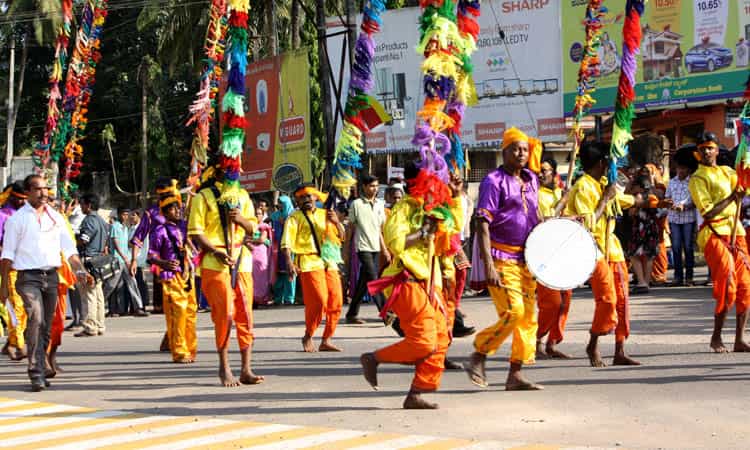
This popular folk dance of Karnataka is mainly famed among the people of Mysore region. Just like its predecessors, this dance form is mainly rooted in ritualistic and devotional performances. It also combines various forms of narration with an emphasis on rhythm and skills of the dancers. Although similar in various features, this dance is limited to performances by men only. Every performance uses the help of 10 to 15 men in a group using a pata or a 10 to 15 feet long bamboo pole decorated in colourful ribbons. The performance is surely a visual treat where these performers manipulate the poles with great dexterity and elegance at the same time. Although there is narration in the background, not much attention goes to it as the performance in itself is extremely awe-inspiring.
6. Bhootha Aradhane
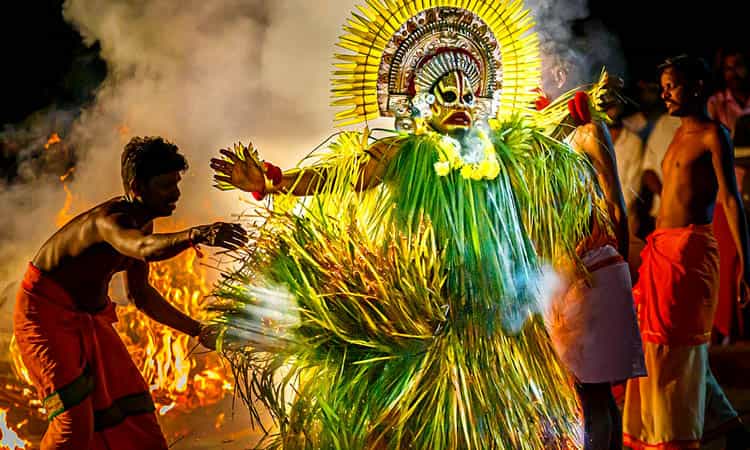
The name of this dance literally translates into devil worship. This is one of the most widely practised dance forms in the coastal regions of Karnataka. The dance is one of the most unique and imaginative styles that represents the perfect mix of folk beliefs, ritualistic magic and other such spectacle. The dance performance is believed to ward off any evil presence in the vicinity by worshipping the devil himself. This particular folk dance of Karnataka is mainly popular for creating a mesmerising and trance-like aura during the dance performance along with the spectacle associated with it. The dance is a part of a procession where the visuals are the most eye catching part of it all.
7. Nagamandala
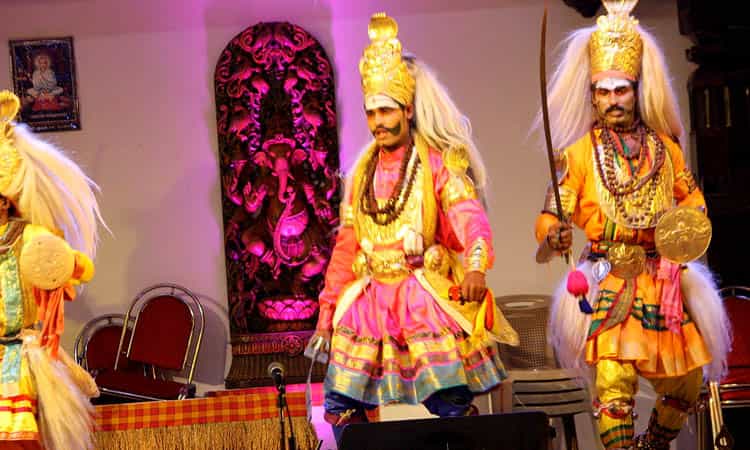
This serpent worship ritualistic dance performance is not only performed in India but across the subcontinent as well. The dance is done as a part of a night-long elaborate ritual that takes place mainly in southern Karnataka. The serpent of the Nagamandala celebration is celebrated and worshipped as a symbol of fertility and represented as an embodiment of life force. This dance celebration involves loud folk music accompanied with Sanskrit and Kannada ritual chanting. The entire procession is accompanied and carried on by a head priest. The dance is usually performed by the vaidyas or the make dancers who specialize in Nagamandala Dance. The Brahmin is the central figure in the dance who gets possessed during the ritual.
8. Kamsale
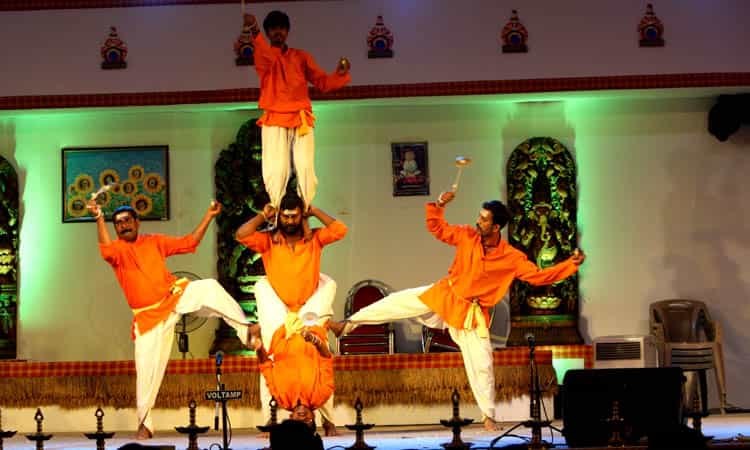
Also known as Beesu Kamsale, this is one of the most uniquely vigorous dance forms of Karnataka. Admired by the Kannada speaking population, the dance is an elegant blend of martial arts, dexterity and sublime aesthetics. This dance is primarily practised in districts of Mysore, Nanjangud, Kollegal and Bangalore. The religious aspect of this dance form is prominent where it narrates the glory of lord Mahadeshwara Shiva and the performers are vowed to a lifelong allegiance to the god. The name of the dance derives its name from the musical instrument used in its performance and is performed by a group of 3 to 5 dancers. They hold a brass scooped out disc in each hand and they clang it together in rhythmic motion during the performance.
9. Goravara Kunitha
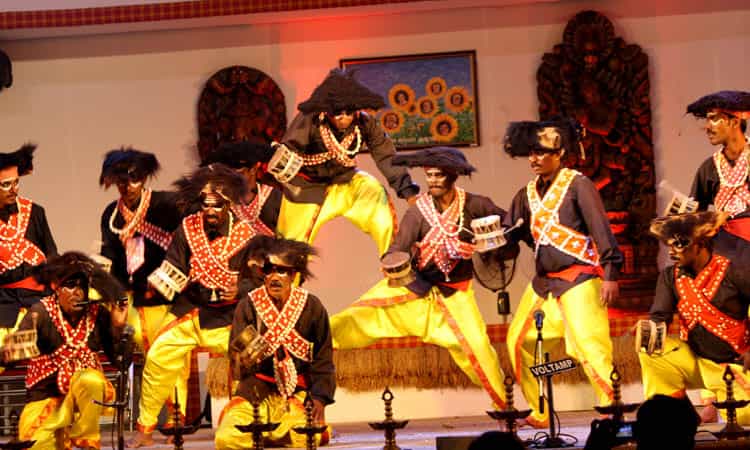
Gorava kunitha is another unique form of ritualistic folk dance of Karnataka. The dance form is mainly famous among the Shaivite cults of Karnataka and is practised and admired in both northern as well as southern regions of the state with minor variations. The dance is men-centric where it involves a group of 10 to 12 men belonging to the singing tribe of the goravas who are believed to be very strong Shiva worshippers. There is no well-defined Gorava Kunitha performance order however its a wonderful sight to witness. The dancers can be seen wearing rug dresses of white with black patches accompanied with mystical songs.
Carnatic Classical Music
1. Gitam
The term Gitam literally means ‘song’ in Sanskrit and is one of the simplest music forms in the Carnatic musical diaspora. Created by Purandara Dasa Gitam is a simple devotional melody song whose tempo remains the same throughout and doesn’t change, and that is the beauty of it. There is no Anga change and also lacks absolute defined divisions. There are different types of gitams where some gitams contain sections rather than defined divisions. The theme of the gitams remains God’s dedication and devotion, with a set tempo throughout the musical performance.
2. Suladi
The talas in Carnatic music have evolved over the years when it comes to their composition and construction. The term suladi itself is derived from the term Suda which later on became sula, meaning to sound and to occur in a predetermined manner. The name indicates that all these songs were rendered in a set sequence to the seven specific Suladi Talas. Over time, the suladis form a distinct group of special compositions that are sung in a prescribed manner to Desi Talas. Over the course of time this conventional prescription and practice with regard to talas have become rigid in their form that they cannot be interpreted or performed in their own versions.
3. Kriti
Kriti technically refers to a format of musical composition which is typically found in folk Carnatic music. Over time kritis became the mental backbone of any typical Carnatic musical concert. Literally, Kriti means creation and is conventionally made up of 3 parts called – Pallavi, Anupallavi and Charanam. The composer’s signature tune can be heard during the charanam part of the song. Kriti is widely regarded as being synonymous with the term ‘Kirtana’ which is a simple devotional song and is performed not just in temples or religious processions but also in Carnatic performances as well.
Frequently Asked Questions (FAQs)
Q. What Language Do They Speak In Karnataka?
Ans. Kannada is spoken in Karnataka.
Q. What Are The Famous Foods In Karnataka?
Ans. The famous foods in Karnataka are: Korri Gassi, Neer Dosa, Mysore Pak, Coorg Pandi Curry, Allugedda, Haalbai etc.
Q. When Is The Best Time To Visit Karnataka?
Ans. October to February is the best time to visit Karnataka.
Q. Which People Are The Dominant Ethnic Group In Karnataka?
Ans. The Kannadigas form 67% of the total population in Karnataka.
Q. What Are The Famous Temples In Karnataka?
Ans. Famous temples in Karnataka are: Udupi Srikrishna Temple, Vidyashankara Temple, Mallikarjuna Temple, and Gokarna Mahabaleshwar Temple etc.

